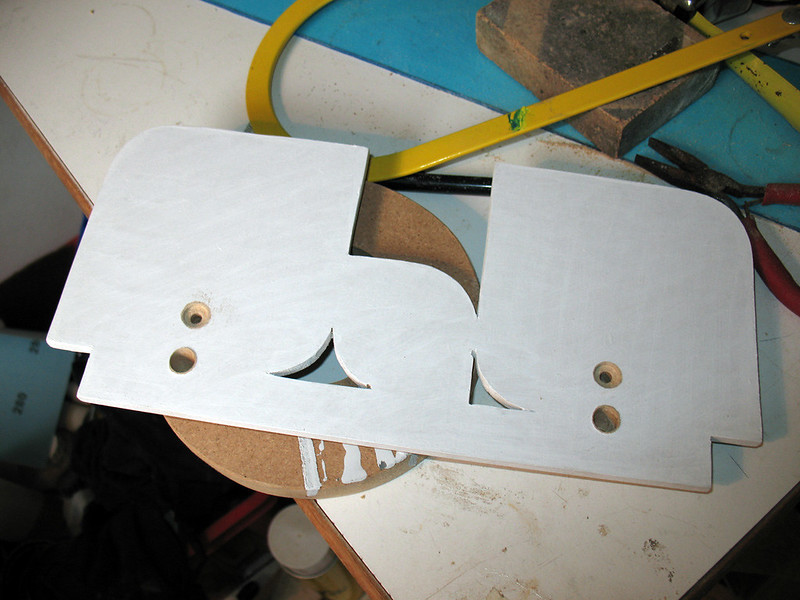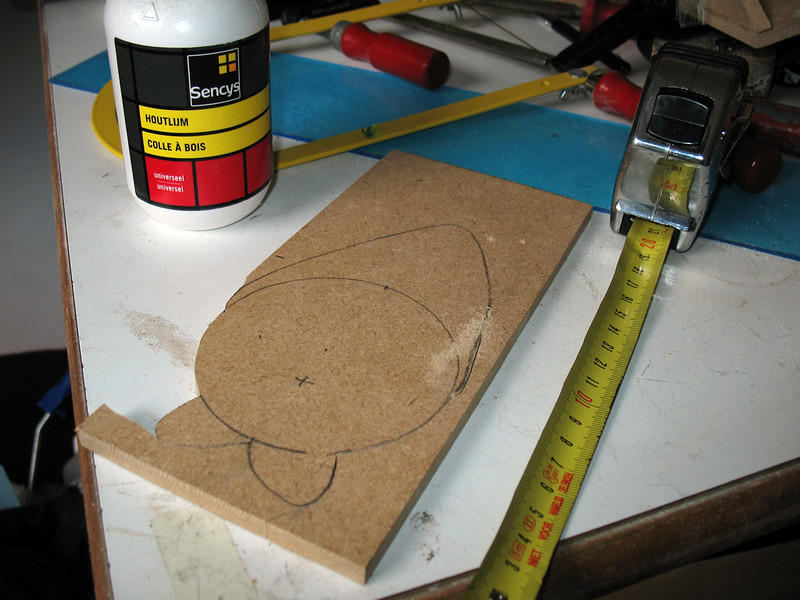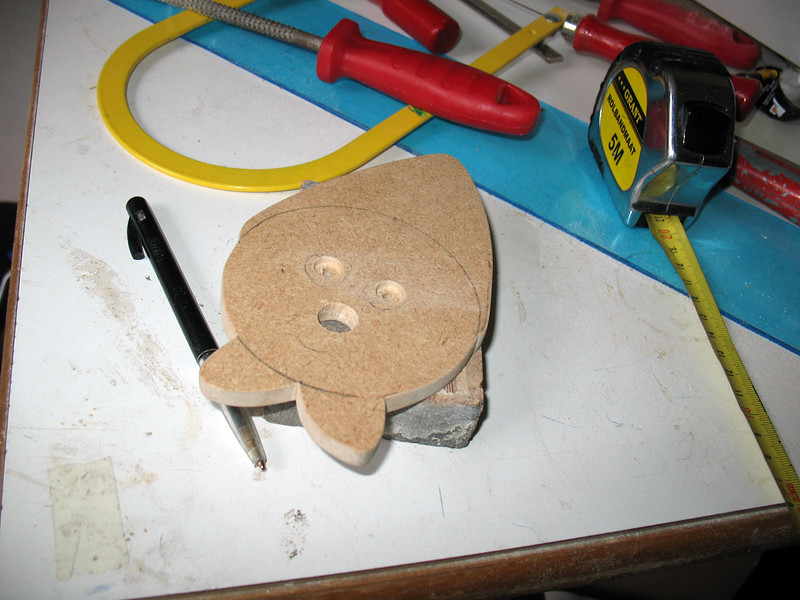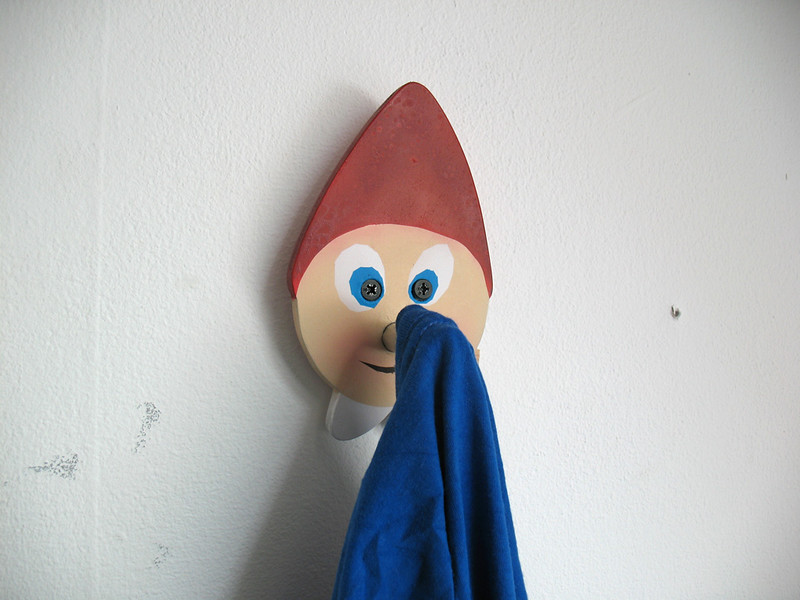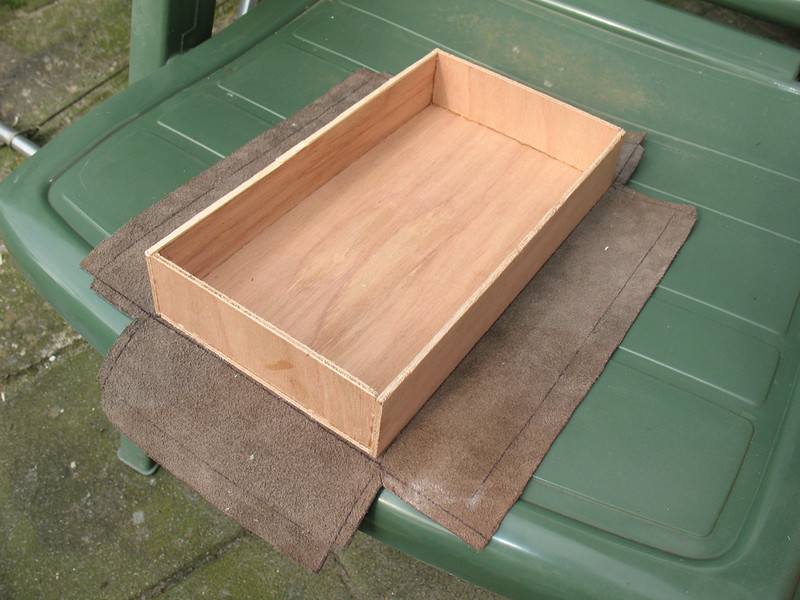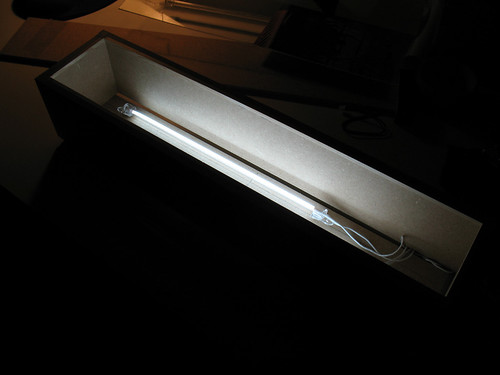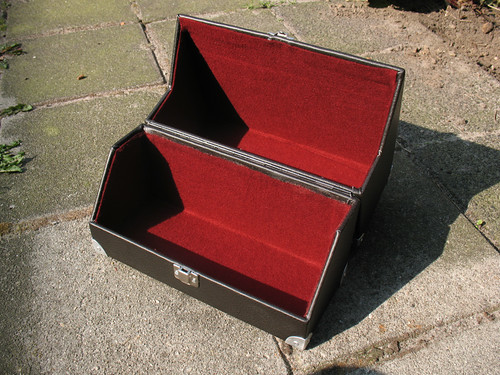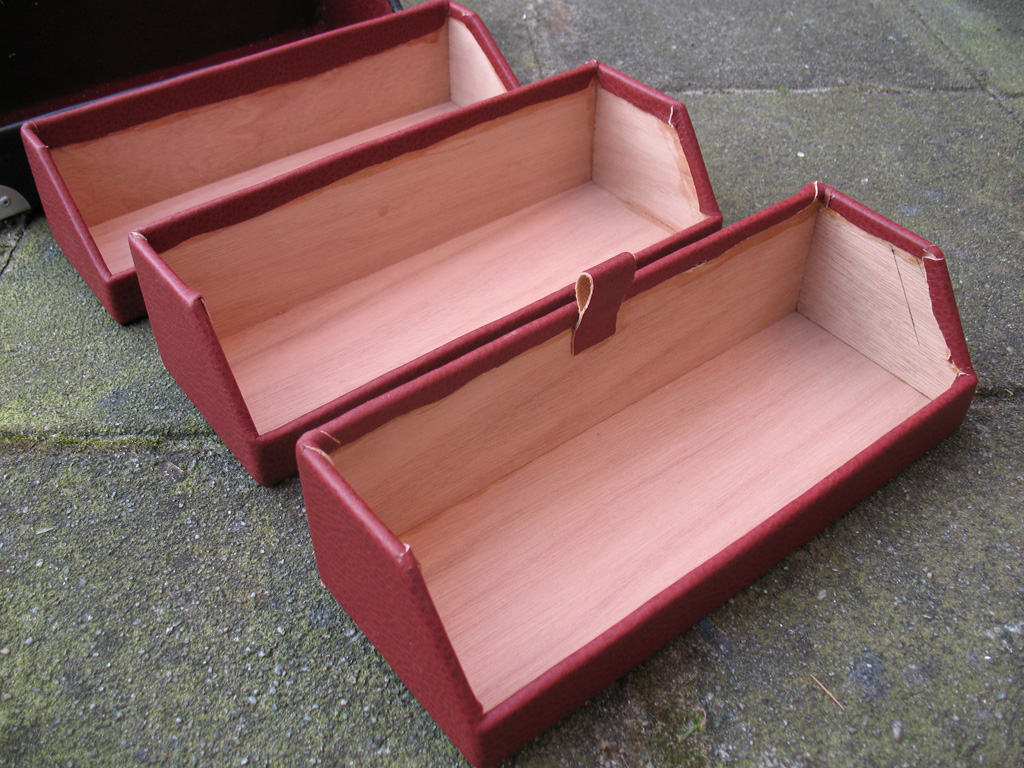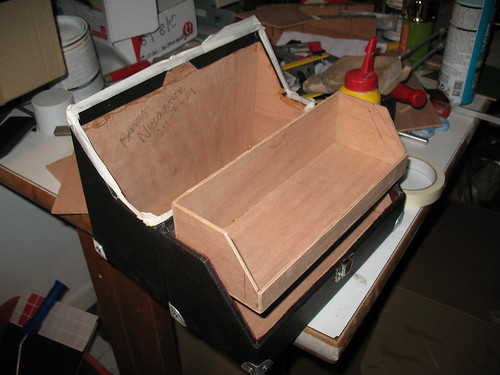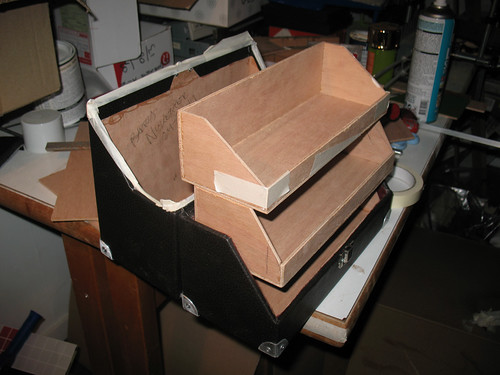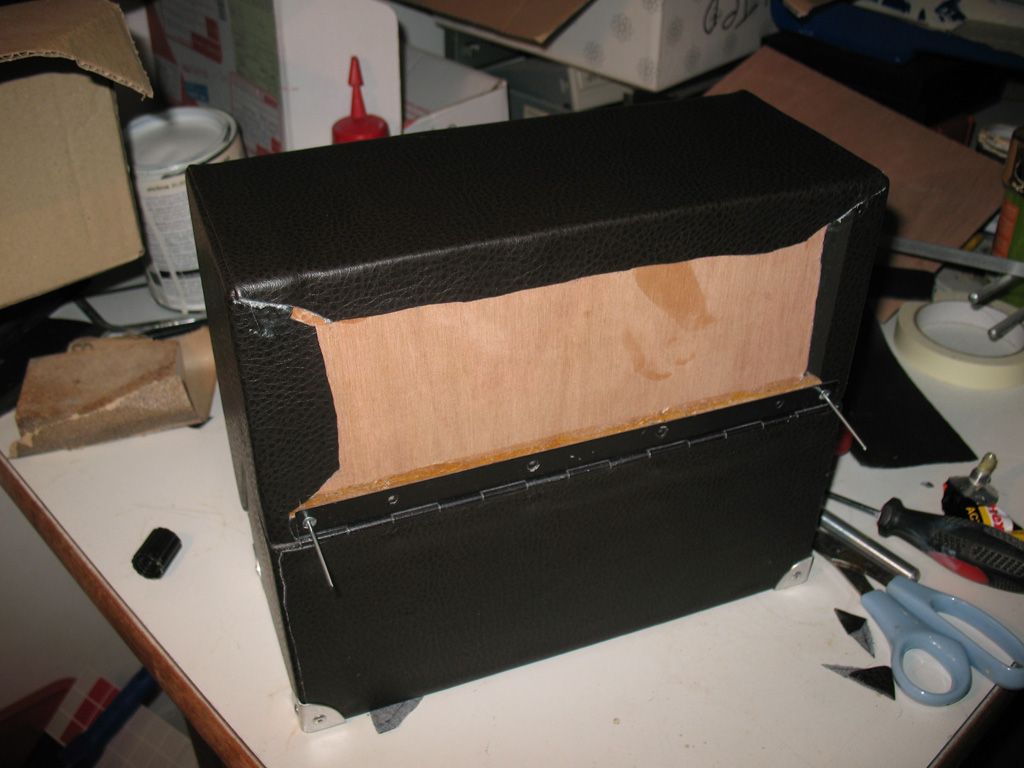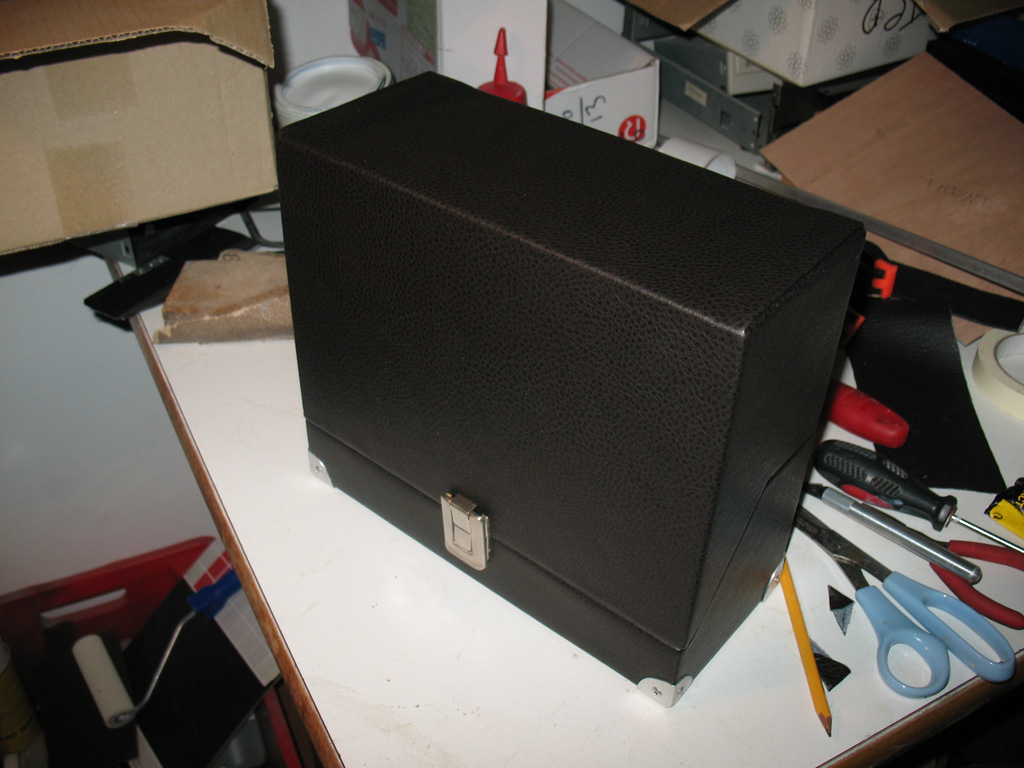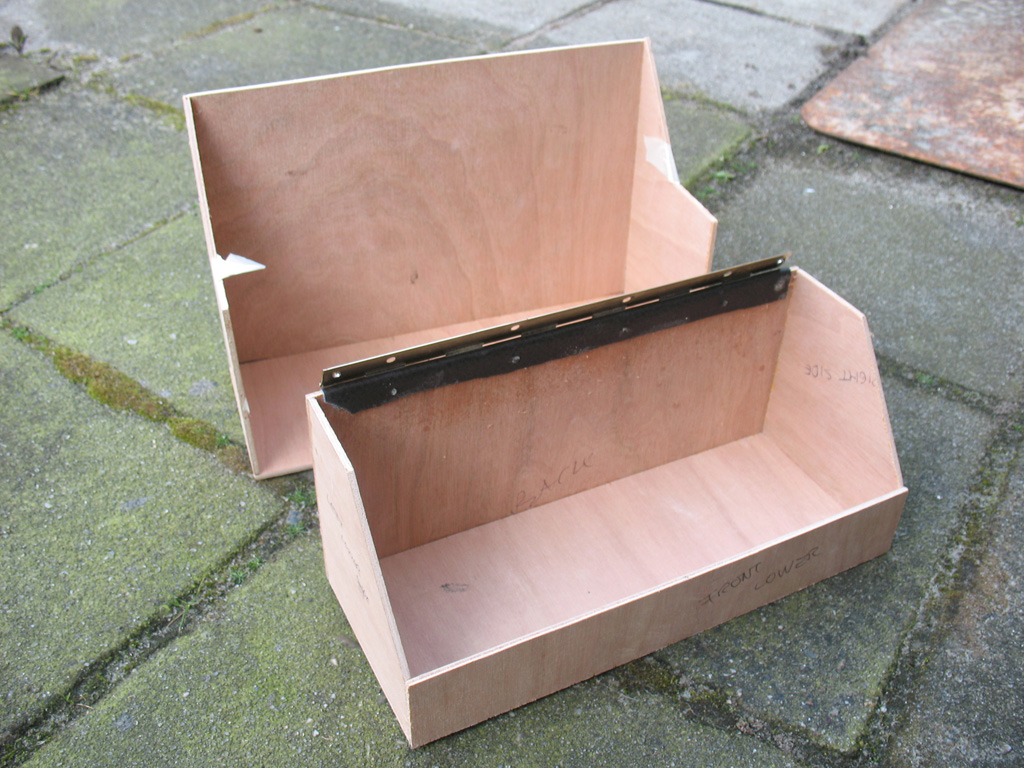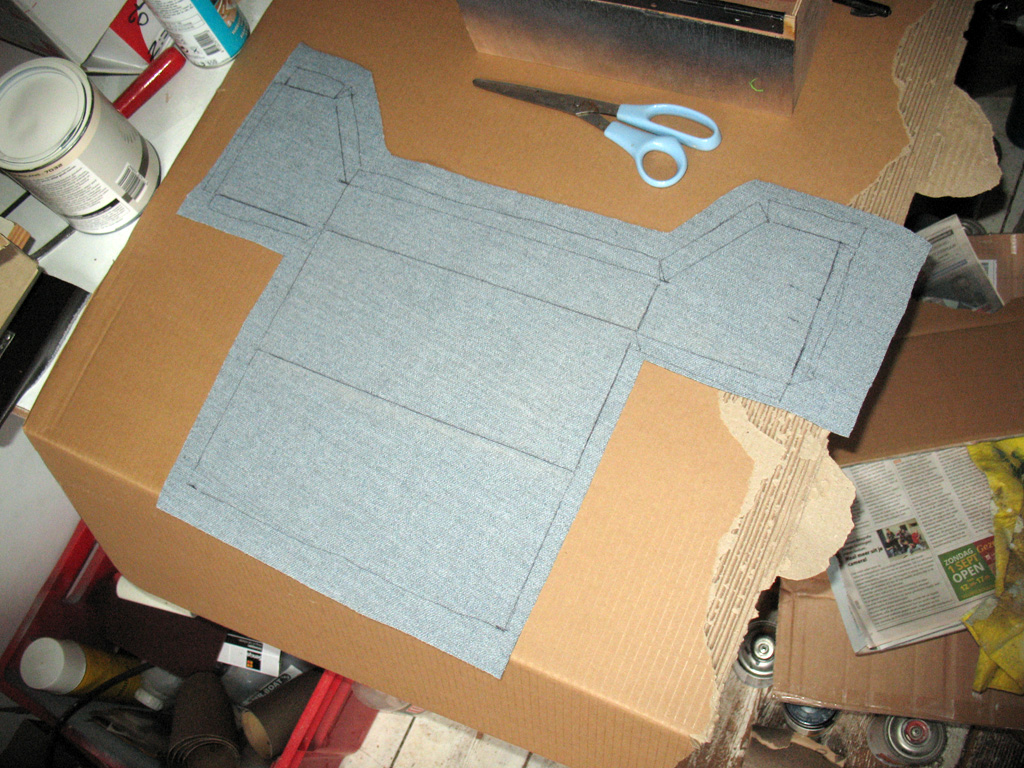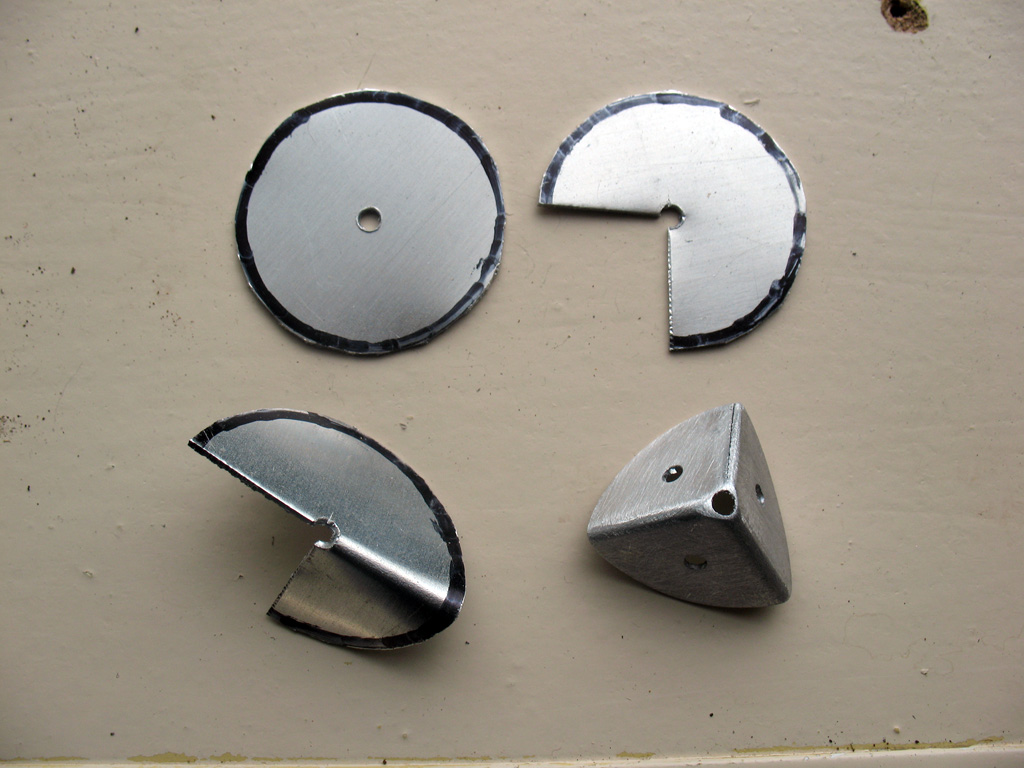Almost done with this one.
Tuesday, September 9, 2014
Friday, May 9, 2014
Weird LED Clock
I'm always thinking about LED clocks, how to make an original one. I've made one a couple of years ago, it was inspired by the beautiful nixie clocks but using LED's instead of high voltage expensive nixie tubes. Now I'm still thinking about 7-segment displays (the numbers that make up a digital clock), how to make my own. It's hard to make your own using existing clock hardware. The route towards writing software and making your own pcb's is still a bit off-putting to me, but I might get to that some day. In the meantime tinkering with clock kits, trying to figure out how they work and especially what materials I like to combine them with. Here's an example, a test piece, of a LED clock in a clear housing on a wooden base. Added feature is bright yellow light lighting the clear housing (and the room) when the alarm goes off. It looks like something out of a James Bond movie, and that's what I like about it, it doesn't just show the time, it also has a dramatic housing around it, which, when I perfect the design will hopefully be a true unique and weird and wonderful clock.
Monday, May 5, 2014
Bird Family Coat Rack For Kids
After the Pinocchio coat rack I got a taste for some more. Because a tree branch coat rack makes sense related to Pinocchio's nose, the only other subject I could think of are birds. A bird sitting on a tree branch. So I quickly designed some simple birds and cut the design out of MDF board. Give it a coat of white acryllic paint and drilled holes for the tree branch and screws. The back is reinforced with an extra piece of MDF which also acts as a spacer between the wall and the coat rack. The birds were hand painted with some shading done with an airbrush. Came out real nice. You can probbaly find them real soon in my Etsy shop.


Saturday, May 3, 2014
Pinocchio Coat Rack
Thinking of what I could do with a tree branch coat rack, suddenly Pinocchio came to mind. Obvious really when you think of it. So I roughly sketched a Pinocchio head, purposefully avoiding the Disney resemblance. I then cut out the head shape and drilled holes for the nose and eyes. I decided the eyes would be perfect for the mounting screws so I recessed the holes a bit. From the last coat rack I still had a piece of tree branch that I could use for the nose.
Next up came painting. I decided to use acryllic paints with an airbrush. First primed the piece and then layer after layer of paint. Finally, sprayed the screws black and installed the nose (which has no paint on it). There you have it, a Pinocchio coat rack ready for a kid's bedroom.
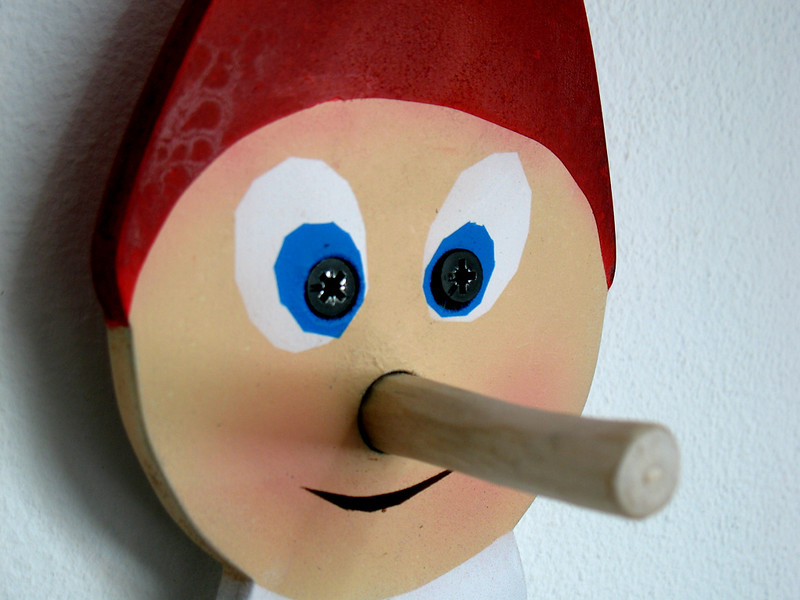
Next up came painting. I decided to use acryllic paints with an airbrush. First primed the piece and then layer after layer of paint. Finally, sprayed the screws black and installed the nose (which has no paint on it). There you have it, a Pinocchio coat rack ready for a kid's bedroom.

Friday, May 2, 2014
Landscape Light Box Part 3
Here's an update on the light box. I have started painting the box and all the electronics and CCFL tubes are test fitted with screws in place. There are two transformers that convert 12 volts to 300 volts. Everything fits nicely in the box. Wires from teh converter join to a wire block, from there a wire runs out of of the box to a 12 volt adapter. Once painting is done all I need is two sheets of clear acryllic glass and a photo print.
Wednesday, April 30, 2014
Tree Branch Coat Rack, Towel Holder
Had a tree branch and took the bark of. Decided to drill some holes in it and make a coathanger out of it. Drilled 3 holes for attaching it to a wall and stuck smaller branches in the other holes. Still deciding wether I should paint it (white) or leave it as it is and let it get darker over time and get an aged wood look.
Tuesday, April 29, 2014
Leather Box For Keys And Stuff
Same thing as when I made the leather case, this time a bit more simple. Glued pieces of wood together and stuck the box on an old piece of leather (from a couch). Cut the leather to fit the sides and stuck velt on the inside of the box. Now I can throw my keys in here whitout them scratching any furniture.
Sunday, April 13, 2014
Landscape Light Box Part 2
I've installed a small strip of wood to form an inner frame that will hold the clear plastic and print. Put primer on it which will allow me to see if I need to sand the front some more to make the strip and box flush. In the meantime I am glueing pieces of wood on the backside which is a piece that will hold the electronics and lights. The pieces of wood will allow me to screw the lights down to the back. So next time I will probably have the lights mounted on the back, after which I can drill holes for ventilation and hanging.
Friday, April 11, 2014
Landscape Light Box Part 1
I've been wanting to do this one for a while. A wide light box for a landscape photo. This one will be about 20 by 4 inches, 50 by 10 centimeters. By 10 cm deep because this will allow the box to stay on a surface if not hung on a wall and not fall over if it was less deep, thinner.
The box is made of MDF and glued, on the front side I glued small strips of wood that will serve as a frame to hold the picture and the plexiglas/acryllic glass, clear plastic.
What you see here is a test of how much light is generated by 3 CCFL's in this box and how I should arrange them. This is critical cause I also need to fit the power converters inside the box without blocking the light. The CCFL's are like thin tube lights (used in laptops and pc case modding and cars), they work on about 300 volts which are generated by a converter (a small box you get with the lights), input is 12 volts. Currently I'm using a 3 amp adapter to power these, I'm not sure how much the CCFL's can consume, but I see the difference from when I was using a 1 amp adapter. Way more light now. It actually lights up the room. May also try some LED strips in the future, they will probably use more power but won't be able to break (CCFL's will break if you drop them on the floor) and less heat, though CCFL's only get a little bit warm not ho

The box is made of MDF and glued, on the front side I glued small strips of wood that will serve as a frame to hold the picture and the plexiglas/acryllic glass, clear plastic.
What you see here is a test of how much light is generated by 3 CCFL's in this box and how I should arrange them. This is critical cause I also need to fit the power converters inside the box without blocking the light. The CCFL's are like thin tube lights (used in laptops and pc case modding and cars), they work on about 300 volts which are generated by a converter (a small box you get with the lights), input is 12 volts. Currently I'm using a 3 amp adapter to power these, I'm not sure how much the CCFL's can consume, but I see the difference from when I was using a 1 amp adapter. Way more light now. It actually lights up the room. May also try some LED strips in the future, they will probably use more power but won't be able to break (CCFL's will break if you drop them on the floor) and less heat, though CCFL's only get a little bit warm not ho

Saturday, March 29, 2014
Custom Leather Case Part 6
It's finished! This was way more work than I anticipated, as always :) Especially the leather and felt part took some time getting used to working with. Now I need to find some use for the case, I'll show that as well when I figure it out. Here are some shots of the finished result and thanks for watching. Barry


Thursday, March 27, 2014
Custom Leather Case Part 5
Just a short update today. I've covered the inside trays of the case with red leather as you can see from the pictures. After this I will cover the inside of the trays with black felt. Also got an aluminium handle, have to install it yet as I'm trying to figure out if the bolts that will hold the handle will clear the trays when the lid is closed. Tomorrow, perhaps the case will be completely done. Stay tuned.
Tuesday, March 25, 2014
Custom Leather Case Part 4
I've spent about 4 days building this case now, in hours, maybe 20. I know, it sounds like a lot. Some of it is due to mistakes you're bound to make when you do this sort of thing for the first time. Cutting wood is a time consuming job, again sometimes due to mistakes having to cut things twice, but haven't lost a lot of wood to the bin yet. Since all the wood is covered you can get away with a lot of bad cuts and rough edges. Making the 8 corner protectors was quite some work, maybe 1,5 hours, cutting disc shapes out of aluminium using scissors, drilling 4 holes, bending the piece, sanding it. Moneywise, spent about 25 euro (32 dollars?), leather and felt being the most expensive part, used a lot of glue also, about 5 euro worth. Wood was 5 euro as well. Aluminium sheet I still had in storage as well as rivets.
Note to self, try to slow down a bit. Today I wanted to fit the first pieces of red felt but hadn't thought it through and ran into trouble when having to remove felt after it was glued down, not a pretty sight I tell you.
Anyway, today also started on the inner trays that the case will hold, 3 of them. And immediately ran into a small problem. I had envisioned 3 equal trays, however, due to the way the lid closes there wasn't enough room to make 3 equal ones that are stackable. So the top one will be a little bit different to allow the case to be able to close. Same procedure as the case, glue multiplex wood together to form a box. I use 90 degree angle shaped pieces of wood to keep pieces in the correct allignment when drying, using clamps. Using painter's tape also helps a lot to keep some tension on keeping pieces stuck together while drying.
You may be wondering why I haven't put felt in the top part of the case yet, that's because I still have to decide about a handle that will need to be fixed to the top and also I might need some kind of foam in there that will keep my trays from bouncing around when the case is closed.
Here are the results of today. Hope you enjoy this build, I certainly am :)
Note to self, try to slow down a bit. Today I wanted to fit the first pieces of red felt but hadn't thought it through and ran into trouble when having to remove felt after it was glued down, not a pretty sight I tell you.
Anyway, today also started on the inner trays that the case will hold, 3 of them. And immediately ran into a small problem. I had envisioned 3 equal trays, however, due to the way the lid closes there wasn't enough room to make 3 equal ones that are stackable. So the top one will be a little bit different to allow the case to be able to close. Same procedure as the case, glue multiplex wood together to form a box. I use 90 degree angle shaped pieces of wood to keep pieces in the correct allignment when drying, using clamps. Using painter's tape also helps a lot to keep some tension on keeping pieces stuck together while drying.
You may be wondering why I haven't put felt in the top part of the case yet, that's because I still have to decide about a handle that will need to be fixed to the top and also I might need some kind of foam in there that will keep my trays from bouncing around when the case is closed.
Here are the results of today. Hope you enjoy this build, I certainly am :)
Custom Leather Case Part 3
Glueing the leather on the top part of the case went far easier than the bottom half, guess I'm getting the hang of it now. What is still quite hard to figure out, is how you cover the leather over your part in the least amount of pieces. You want it to look smooth around the corners without separate pieces of leather being glued on top of eachother. It should be possible to do the whole half with one piece of leather but I haven't, partly cause my piece of leather wasn't large enough, so keep that in mind. As a result of this I have to glue a separate piece of leather that will cover the back. As it's the back it's not that big of a deal but I wish I had planned a little bit better. Well, next time will use what I have learnt. So this is what I have now, bottom and top and ready to join them together. I will join the two parts first before I cover the back with leather and hide those rivets.
After securing the two halves together I went looking for a locking mechanism. Not only will this hold the two halves together it also allows you to align both pieces, as in my case they didn't line up properly. And since eventually there will be a handle on the top part, the mechanism should hold the weight of it's contents, keep that in mind. I found a locking mechanism on an old suitcase and bolted it to my new case. Apart from the leather on the back, the front looks very professional :)
While that was drying I started on the last 4 corner protectors, I have 2 done at this point as I'm writing this. I haven't got an idea yet how to fix a handle on top or what to make it from. And of course the inside needs to be covered with fabric. After all that is done I will need to construct some boxes that will fit inside the case. I was thinking of making 3 open boxes that stack on top of eachother, maybe cover those in red leather for a classy look. But for now I leave you with a view of the inside and 2 pieces of felt that will cover the entire inside of the case, I think I will go for the red one.
After securing the two halves together I went looking for a locking mechanism. Not only will this hold the two halves together it also allows you to align both pieces, as in my case they didn't line up properly. And since eventually there will be a handle on the top part, the mechanism should hold the weight of it's contents, keep that in mind. I found a locking mechanism on an old suitcase and bolted it to my new case. Apart from the leather on the back, the front looks very professional :)
While that was drying I started on the last 4 corner protectors, I have 2 done at this point as I'm writing this. I haven't got an idea yet how to fix a handle on top or what to make it from. And of course the inside needs to be covered with fabric. After all that is done I will need to construct some boxes that will fit inside the case. I was thinking of making 3 open boxes that stack on top of eachother, maybe cover those in red leather for a classy look. But for now I leave you with a view of the inside and 2 pieces of felt that will cover the entire inside of the case, I think I will go for the red one.
Monday, March 24, 2014
Custom Leather Case Part 2
So the two halves have been glued. I need to mention that you're supposed to glue the whole box together and THEN cut it in two halves, but I don't have a japanese saw to do that. So I had to build the two halfs separately. When the bottom piece was dry I added a piece of leather where the piano hinge is gonna be, this way I get a nice leather rim on the inisde where the hinge meets the wood. Here's what I ended up with.
Next I placed the bottom part on a piece of dark brown "faux" leather and marked all the sides by laying the part on it's sides one at a time and ended up with this:
Next came the hard part, glueing the leather on. I used a contact glue, put glue on both sides and let it rest for 10 minutes, then stick them together. It's best, as I found out later, to glue one side at a time and let it dry, then cut the excess off and make cuts in the corners to allow folding of the leather to the inside of the box. As soon as I had the bottom box done I installed the aluminium corner protection pieces I had made before, using rivets. Doesn't look bad at all. Next time, top box assembly and putting the two halves together.
Next I placed the bottom part on a piece of dark brown "faux" leather and marked all the sides by laying the part on it's sides one at a time and ended up with this:
Next came the hard part, glueing the leather on. I used a contact glue, put glue on both sides and let it rest for 10 minutes, then stick them together. It's best, as I found out later, to glue one side at a time and let it dry, then cut the excess off and make cuts in the corners to allow folding of the leather to the inside of the box. As soon as I had the bottom box done I installed the aluminium corner protection pieces I had made before, using rivets. Doesn't look bad at all. Next time, top box assembly and putting the two halves together.
Sunday, March 23, 2014
Custom Leather Case Part 1
I saw Adam Savage from Mythbuster's on Tested doing a one-day-build and he built a gun case for his Bladerunner weapon replica. This was an awesome build and I always wanted to do something like this. Not for any particularl item but a case that has some boxes inside to store valuable items.
So here we go. I've made a simple drawing of a case, it has a leather outside and felt inside. It needs a opening and closing mechanism and the corners should be protected, edge protectors like cases usually have.
I started with some pieces of plywood (3.6 mm) for all the sides (the case will be 27x22x10 cm).
Then I cut the sides in half, so I can build the two sides of the case, then glued the parts together.
While that's drying I found some aluminium I can use for the 8 edge protectors and started making one.
Check out the progress on this build the next time as I try to make the two halves come together and start working with leather and a piano-hinge.
Barry
So here we go. I've made a simple drawing of a case, it has a leather outside and felt inside. It needs a opening and closing mechanism and the corners should be protected, edge protectors like cases usually have.
I started with some pieces of plywood (3.6 mm) for all the sides (the case will be 27x22x10 cm).
Then I cut the sides in half, so I can build the two sides of the case, then glued the parts together.
While that's drying I found some aluminium I can use for the 8 edge protectors and started making one.
Check out the progress on this build the next time as I try to make the two halves come together and start working with leather and a piano-hinge.
Barry
Subscribe to:
Posts (Atom)



